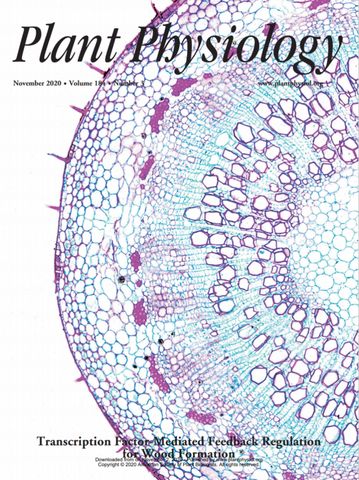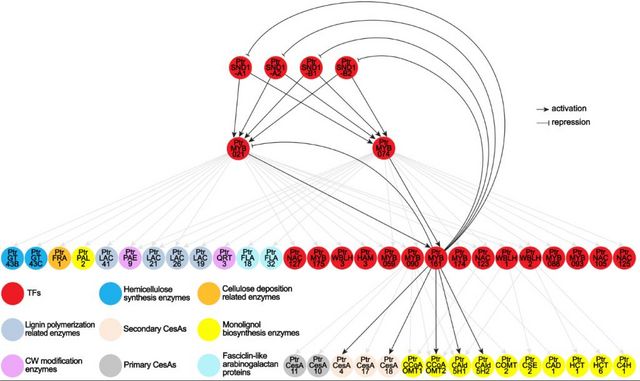Recently, Li Wei’s and Jiang Liquan’s research teams of the State Key Laboratory of Tree Genetics and Breeding of our university cooperatively published a paper online called “MYB Transcription Factor161 Mediators Feedback Regulation of Secondary well-associated NAC-Domain1 Family Genes for Wood Formation” in the internationally renowned botanical journal Plant Physiology (one of the Top Journals among the first rank biology journals). Professor Li Wei and Professor Jiang Liquan are the corresponding authors, and Wang Zhifeng, a PhD candidate in the State Key Laboratory of Tree Genetics and Breeding, is the first author. At the same time, this study was selected as the November Cover Paper of Plant Physiology.

This study reveals that PtrMYB161 regulates wood formation regulatory networks through feedback, and then affects the development of xylem fiber cells, secondary cell wall thickening and wood chemical composition synthesis of poplar, which provides a new clue for wood property improvement by molecular breeding technology.
Wood formation is a complex developmental process, which is regulated by hierarchical molecular networks. In our previous research results, we revealed the gene transcription regulatory network mediated by PtrSND1-B1, a key transcription factor in wood formation (Lin et al 2013, Plant Cell). On this basis, PtrSND1-B1-mediated multi-level gene regulatory network of wood formation is further constructed. It is found that there is a stable regulatory mechanism jointly determined by transcription factor-DNA interactions and protein-protein interactions during wood formation.And PtrMYB161 is located on the third layer of the network, directly binding and activating the expression of five wood component synthase genes (Chen et al 2019, Plant Cell).
The latest study finds that the PtrMYB161 gene is highly expressed in poplar xylem fibroblasts. Overexpression of PtrMYB161 results in a decrease in the number of xylem fiber cells and thinning of secondary wall, while the number of vessel cells increases and the thickness of secondary cell wall does not change significantly. This overexpression also seriously affects the wood composition of transgenic plants whose glucose and xylose separately decreases by around 50%, S (Syringyl) lignin decreases by about 57%, and G (Guaiacyl) lignin increases by around 115%. Further studies showed that PtrMYB161 inhibits the whole wood formation network by directly binding, feeding back and regulating the expression of PtrSND1s family members in the first layer and PtrMYB021 in the second layer. These results indicate that PtrMYB161 plays a role of transcriptional activation or inhibition in the multi-level gene regulatory network of wood formation, which cooperatively regulates poplar wood formation.
